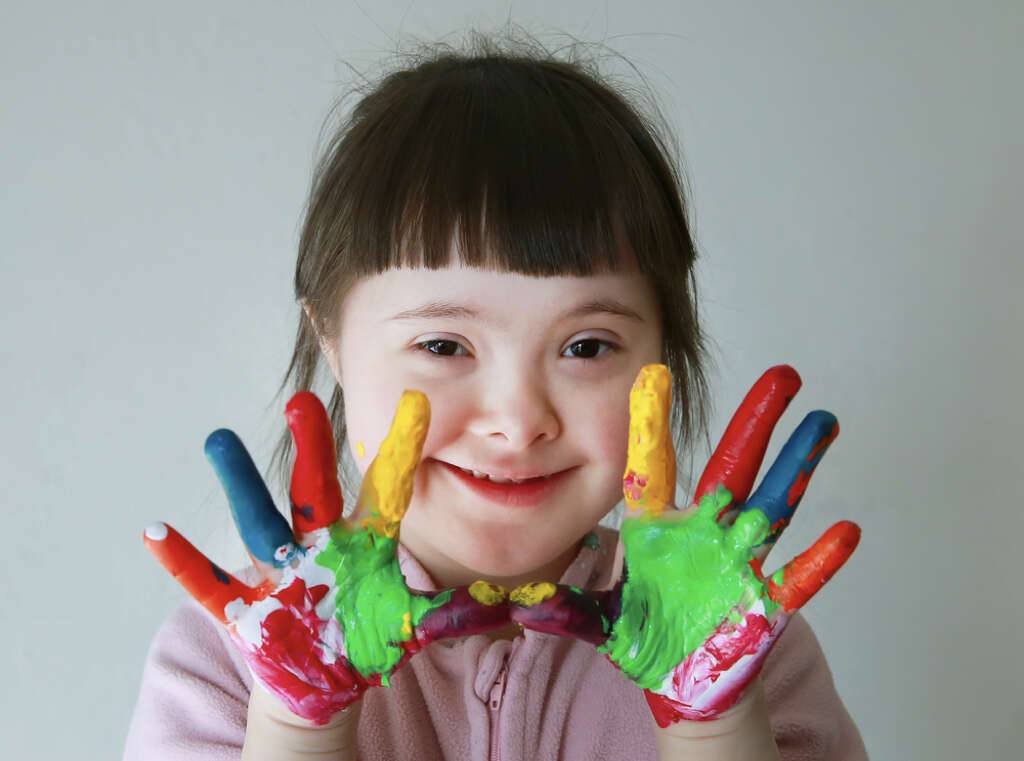10 Symptoms Of Down Syndrome
Down syndrome is a well-known condition that is caused by a genetic disorder. It is named after British doctor John Langdon Down who first described the condition in 1866. People with Down syndrome tend to have very distinct characteristics that make it easy for people to recognize their condition.
People with Down syndrome will have varying degrees of physical and mental impairment. Despite their problems, however, they are typically known for having outgoing, cheerful personalities.
It can be difficult for them to live “normal” lives, but some will be able to attain a certain level of education, and some will even go on to find employment.
Symptom #1: Atrioventricular Septal Defect
Our hearts have four chambers. The two atrium chambers fill first and then pump the blood into their corresponding ventricle chambers. This is done under pressure as it needs to be in order for the blood to be pumped around the body. This also means that the chambers need to be tightly sealed in order for the blood pressure to be maintained.
An atrioventricular septal defect basically means that there is a hole between the heart’s different chambers, and this will affect the heart’s ability to pump blood. It is a fairly common condition among children born with Down syndrome, while other heart problems are often encountered as well.
Symptom #2: Flat Nasal Bridge
The bridge of the nose is located between the end of the frontal bone in your forehead and the start of the nasal bone in your nose.
In patients with Down Syndrome, the nasal bridge is distinctly flat and wide, giving the characteristic appearance of a flat face associated with this condition.

Symptom #3: Short Attention Span
Having at least a reasonable attention span is something that most of us take for granted, but things can be quite different if our attention spans were short. We might have difficulty reading a book or even watching something on TV, while our academic abilities will certainly suffer.
A short attention span is a common symptom among people that have Down syndrome. They will often have difficulty focusing on anything, making it difficult for them to achieve day-to-day tasks. With the right support and coaching, however, the impact of the symptom on the patient’s quality of life can be limited.
Symptom #4: Poor Muscle Development
It is very important that all children are given plenty of the right nutrition when they are young. This is because they are developing, physically as well as mentally, and they need the right building blocks in order for them to grow. It is not always a lack of nutrition that can limit our development, however.
Children with Down Syndrome will often suffer from poorly developed muscles. Muscle tone is affected as well and this can lead to further complications later in life. Physical therapy is beneficial for these patients.

Symptom #5: Brushfield Spots
Brushfield spots are so-called after Thomas Brushfield, the physician who first described them. They are small spots around the iris that are gray/brown in color, and are caused by the accumulation of connective tissue. They are a fairly common condition and are most likely to affect people from European descent.
Brushfield spots are also a common symptom among children with Down syndrome. They are not always noticeable and tend to be easier to spot in children that have light-colored eyes. They are not harmful and should have no impact on the patient’s ability to see clearly.
Symptom #6: Gastrointestinal Defects
A healthy digestive system is more important for our overall health than a lot of people realize. It is essential that we get the nutrition that we need, while our digestive organs are also responsible for producing hormones that help with the overall running of our bodies.
Unfortunately, children with Down syndrome are often born with gastrointestinal defects. Around 10% of all children with Down syndrome will have such conditions. The good news is that these problems can usually be treated, albeit with surgical procedures. It can mean that people with Down syndrome need to be careful about what they eat, even as they get older.

Symptom #7: Wide Hands
People’s hands and feet come in different shapes and sizes, but some will have features that are noticeably different from the norm. This can be down to various reasons, including genetics, with certain characteristics being passed down from parents. It can also be due to Down syndrome.
It is quite common for people with Down syndrome to have hands that are wider than usual, while they will also have feet that are smaller than usual. They will also have only one crease going across their palms whereas other people usually have at least two. Neither of these conditions are harmful or hinder the patient in any way.
Symptom #8: Short Height
Many patients with Down Syndrome have lower birth weight and length than average newborns. This feature continues throughout their development, causing them to be shorter in height.
Short extremities are a known feature of Down Syndrome as well and it summates to the overall short stature of the patients.

Symptom #9: Learning Difficulties
Some kids are just better than others when it comes to learning new things. It is largely a matter of genetics, while nutrition, upbringing, and some other factors can contribute how well children develop where their cognitive abilities are concerned. It is also common for children with Down syndrome to have learning difficulties.
Children with Down syndrome are likely to learn to speak later than other children will. They are likely to be behind other children in academic matters and will also struggle to learn how to handle social situations. Even among children with Down syndrome, learning abilities can vary significantly. Some will even go on to graduate from high school.
Symptom #10: Short Neck
Having a long neck is useful to us. It gives us greater flexibility, allowing us to move our head around at angles that make it easier for us to see and to eat. They also help to raise our heads up higher; a very useful evolutionary feature because it meant we had a better view from which to spot food and potential danger.
People with Down syndrome, however, will likely have a neck that is shorter than other people. This can even make the patient appear to be shorter than they otherwise would be. It is not a condition that will do the patient harm, even if it can make their appearance a little abnormal at times.











